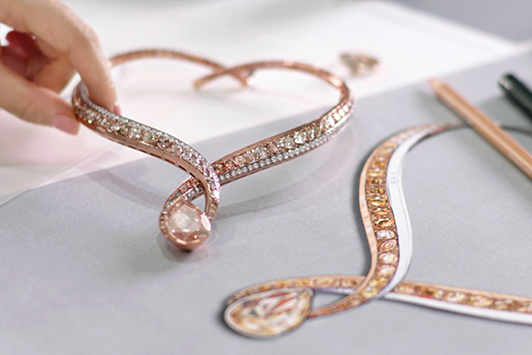
The major auction houses have transformed their business models and images in recent years from stodgy old-world institutions to dynamic, transaction-focused, technology-driven operations. This has been most evident since the global coronavirus pandemic started, when auction houses quickly moved to online-only sales.
Sotheby’s and Christie’s already had robust online auction platforms in place, primarily for signed and unsigned period jewels that lacked the value of the pieces on offer at live events. These timed auctions, occurring over a period of several days or weeks, have been successful in increasing jewelry sales and attracting new, often younger people.
Burgeoning demand
When the pandemic hit and live auctions were postponed, the auction houses went exclusively to online sales for its jewels and soon discovered there was strong demand. The first online-only jewelry sale after the Covid-19 shutdown was a Sotheby’s auction in March, which totaled $739,375 and sold 97% of its lots. Of those, 50% beat their high estimates. Participants from 32 countries competed for jewels, and 22% of buyers were new to Sotheby’s. Notably, half of all bids came through a mobile device.
Two online jewelry sales from Christie’s in April were even more impressive. The first, in the US, totaled more than $1.3 million and sold 99% of lots. Bidders from 31 countries participated; 39% of them were new buyers. The top lot was an emerald and diamond Icon necklace by Graff that went for $52,500, well above its high estimate.
The second sale, this one in Hong Kong, also achieved more than $1.3 million, with 89% selling by lot and participants hailing from 20 countries. The top lot was a Cartier diamond necklace that fetched $70,000, smashing estimates.
From Cartier to Anna Hu
The auction houses then tested the market for marquee items and discovered again that buyers were ready. Sotheby’s broke the million-dollar mark in late April when it sold a Cartier tutti frutti bracelet for more than $1.3 million in a dedicated five-day online sale.
In June, Christie’s topped that mark by selling a 28.86-carat, D-color, VVS1 diamond for $2.1 million — a record for any jewel at an online-only auction. The stone received 31 bids from four countries, ranging from Asia to America. The five-day auction of 140 lots achieved more than $4.1 million, with 100% selling by value and 93% by lot. In addition, 64% of lots met or exceeded their high estimates.
Christie’s then hosted a dedicated online charity auction featuring three one-of-a-kind pieces from high-jewelry artist Anna Hu, with diamonds donated by Alrosa. The stones included a pear-shaped, 27.02-carat, fancy-brown-yellow diamond. The auction raised $338,781 for the families
of health-care workers who lost their lives to Covid-19.
These results show that people are confident enough to pay upward of six or seven figures for the right jewel under the right circumstances. Nothing can replace the energy and excitement of a live auction, but online sales are now a permanent part of the auction calendar. Their influence will grow as collectors become increasingly willing to bid on
high-priced items without ever seeing them in person.
Article from the Rapaport Magazine - August 2020. To subscribe click here.